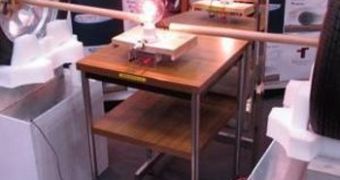In an attempt to solve one major issue EV owners currently have to face – the fact that they can't drive over long distances without having to stop and re-charge – a team of researchers developed a way to “feed” electricity to such cars through their tires.
The experiment was conducted at the Toyahashi University of Technology, and 50-60 watts were successfully transferred to the vehicle by means of concrete blocks, metal plates and an electric field coupling system.
Although for the time being the amount of energy having reached the EV through its tires was only enough to turn on a light bulb, it is expected that in the not-too-distant future the principles standing at the core of this project will allow for electric cars to be charged without the driver having to make regular stops at power stations.
Team leader Takashi Ohira and his co-workers introduced the general public with their innovative technology during this year's Wireless Technology Park in Yokohama.
Entitled EVER (Electric Vehicle on Electrified Roadway), this particular project drew significant appraisal from the people attending this gathering.
However, there is still one more problem that needs to be given due consideration: given the fact that car tires are made of rubber, most of the electric energy transmitted through them is lost in the process.
Therefore, in order for the EV to get what is needs electricity wise, the source power should be increased 100 times over. Naturally, this is neither economic, nor practical.
In spite of this present drawback, the idea to charge EVs in this manner seems to appeal both to scientists working in the automotive industry and to electric car owners throughout the world; so perhaps, once improved on, this technology will begin to catch on.
Japan Daily Press informs us that this is not the first time that engineer Takashi Ohira tries to push for re-charging EVs on the go.
Thus, just last year, he worked closely with Toyota Central R&D Labs on a very similar project.

 14 DAY TRIAL //
14 DAY TRIAL //